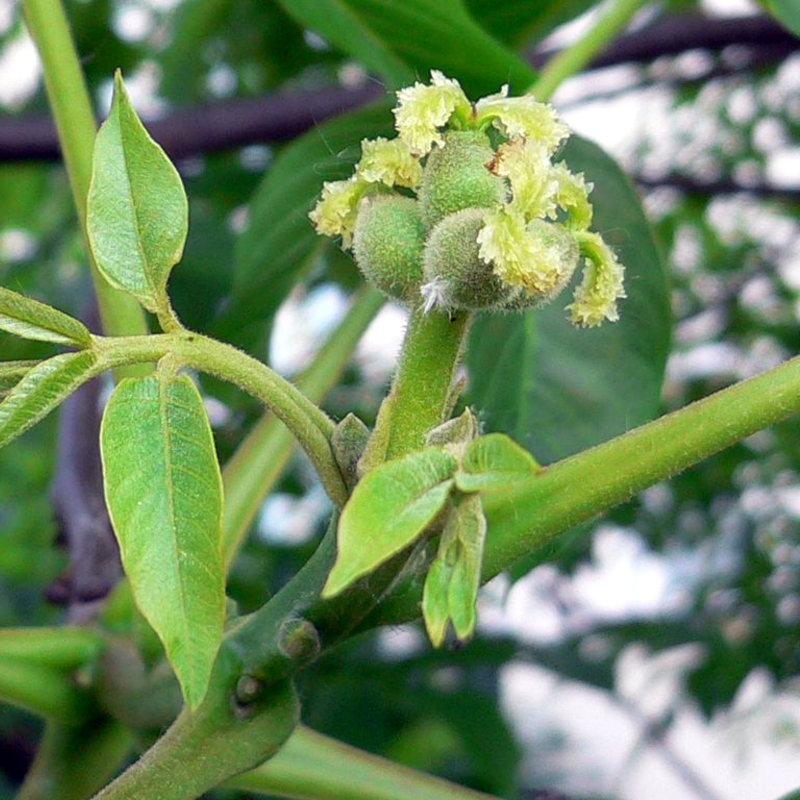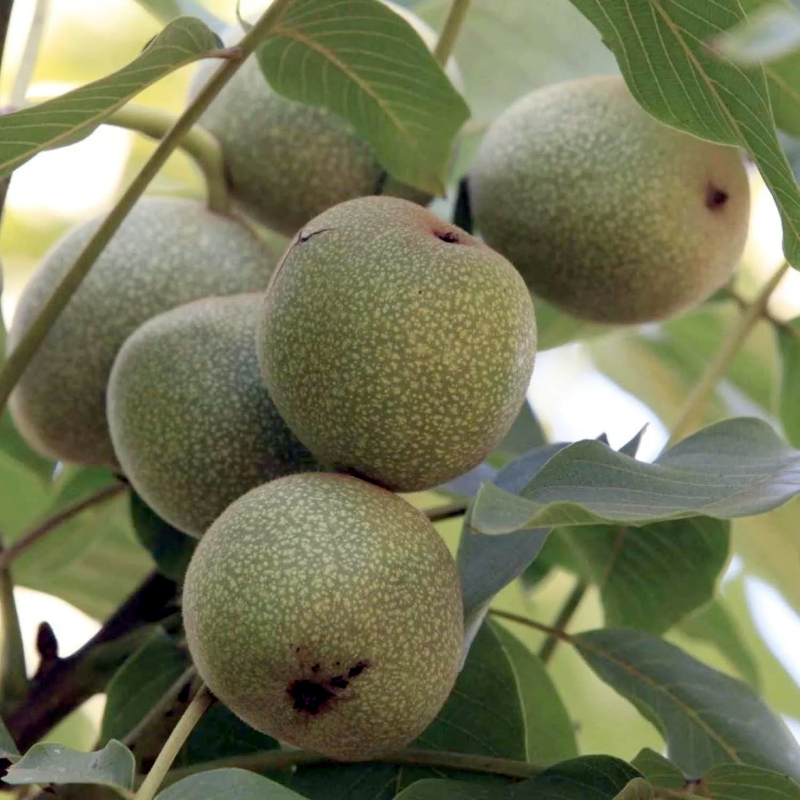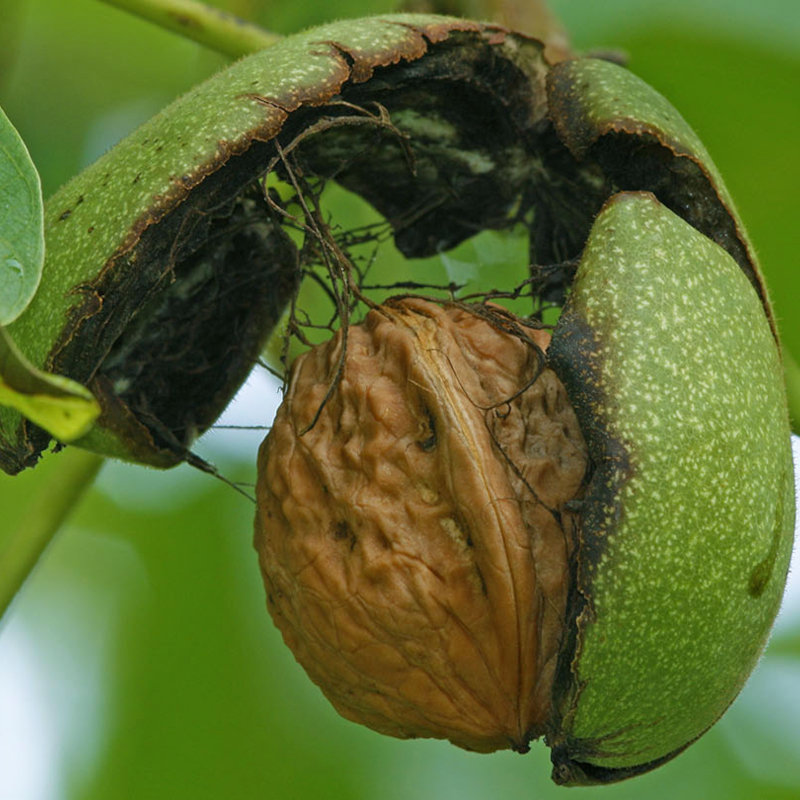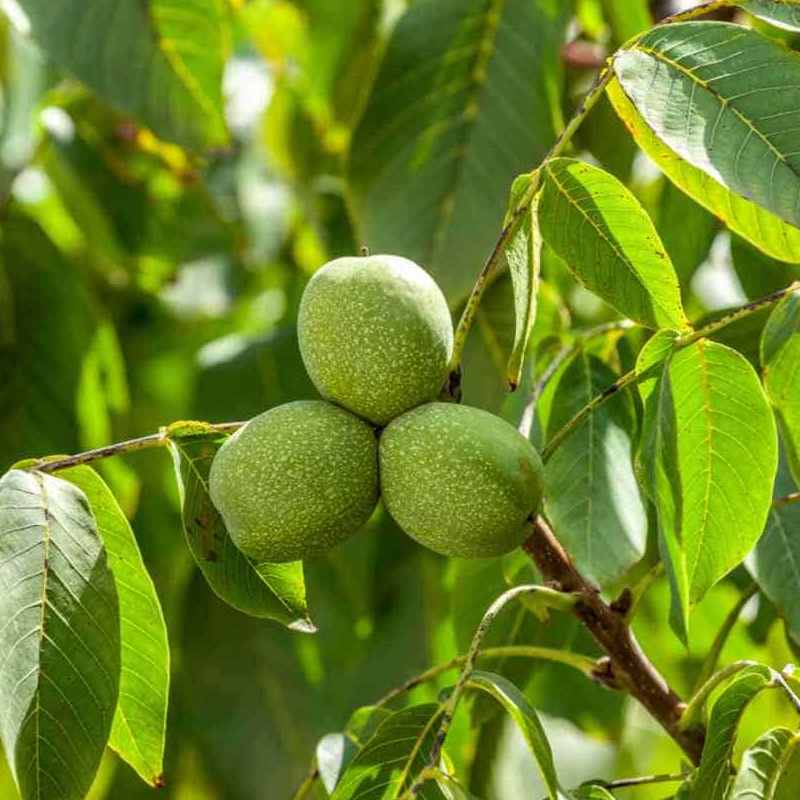How To
Grow
Walnut Tree
Choose the right variety
English (Persian) Walnut (Juglans regia) – popular for nut production.
Black Walnut (Juglans nigra) – prized for timber and nuts, but roots release juglone which inhibits other plants.
Select a good location
Needs temperate climate with cold winters (chill hours: 400–1,000 hours).
Tolerates some heat but not frost-prone valleys in spring.
Full sun (at least 6–8 hours daily).
Deep, well-drained loamy soil (avoid waterlogged or shallow soils).
pH range: 6.0–7.5.
Planting
Planting time: Late fall to early spring (when dormant).
Spacing: 10–12 m apart (wide canopy).
Dig hole twice the root width, place tree at same depth as nursery pot.
Watering
Regular watering during the first 2–3 years.
Mature trees are drought-tolerant but benefit from deep watering during dry spells.
Avoid overwatering (root rot risk).
Fertilizing
Add compost or well-rotted manure during planting.
Begin balanced fertilizer (like 10-10-10 NPK) from year 2.
Test soil annually to adjust nutrients (especially nitrogen and zinc).
Pruning
Prune in late winter to shape and remove dead/weak branches.
Encourage strong central leader (especially in first 3–5 years).
Minimal pruning once mature.
Pollination
Most varieties are partially self-fertile but produce better with cross-pollination.
Plant two compatible varieties for higher yields.
Pest & disease management
Watch for:
Walnut blight (Xanthomonas) – causes leaf and nut damage.
Aphids, caterpillars, codling moths.
Root rot or crown gall if soil is too wet.
Use integrated pest management (IPM) and avoid overhead watering.
Harvesting
Trees begin producing nuts in 5–7 years.
Nuts mature in late summer to fall when hulls split.
Collect fallen nuts, remove husk, dry for several weeks.
Health Benefits of Walnut
- Supports memory, focus, and mood with omega-3s and antioxidants.
- Lowers bad cholesterol, improves blood pressure and artery function.
- Omega-3s and polyphenols help reduce inflammation in the body.
- Fights oxidative stress and slows aging with vitamin E, melatonin, and polyphenols.
- Promotes fullness and appetite control thanks to fiber, protein, and healthy fats.
- Acts as a prebiotic—feeds beneficial gut bacteria and improves microbiome balance.
- Improves insulin sensitivity and lowers fasting blood sugar.
- Linked to reduced risk of breast, prostate, and colon cancers.
- Improves sperm count, quality, and motility.
- Rich in magnesium, phosphorus, and calcium for bone health.
| Nutrient | Amount / Raw Walnut (28Gr) |
| Calories | 185 kcal |
| Protein | 4.3 g |
| Total Fat | 18.5 g |
| Carbohydrates | 3.9 g |
| – Sugars | 0.7 g |
| – Dietary Fiber | 1.9 g |
| Omega-3 | 2.5 g (100% DV) |
| Vitamin B6 | 0.2 mg (15% DV) |
| Vitamin B9 (Folate) | 27 µg (7% DV) |
| Vitamin E | 0.2 mg (1% DV) |
| Potassium | 125 mg (3% DV) |
| Phosphorus | 98 mg (8% DV) |
| Calcium | 28 mg (2% DV) |
| Magnesium | 45 mg (11% DV) |
| Iron | 0.8 mg (4% DV) |
| Zinc | 0.9 mg (8% DV) |
| • DV = Daily Value, based on a 2,000-calorie diet. | |
Various Uses of Walnut
Raw / Roasted
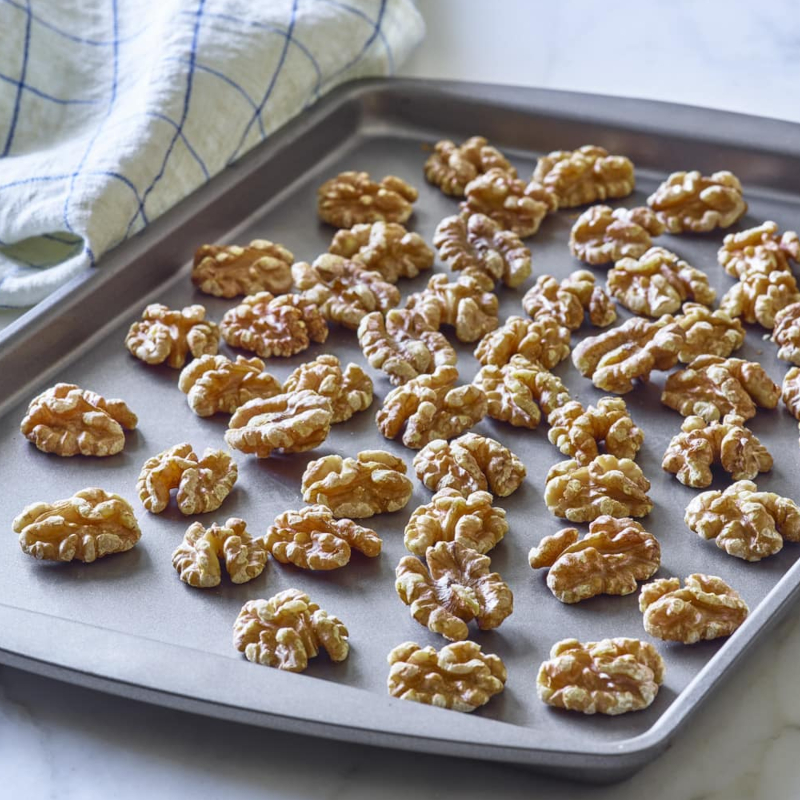
eaten as a healthy snack
Salads & Sauces
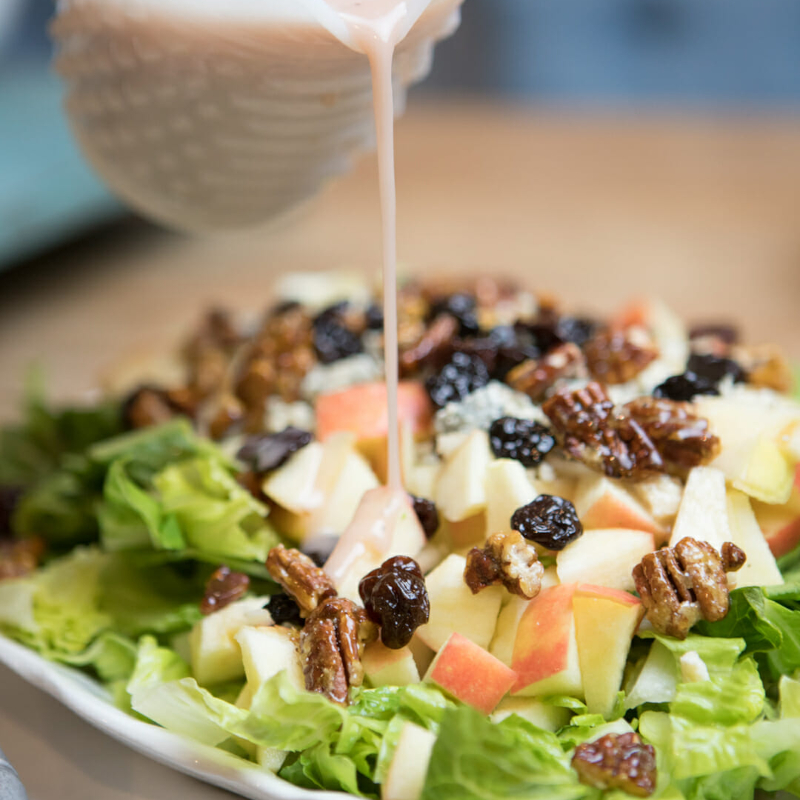
adds crunch to salads, pasta, pesto, and yogurt bowls
Baking & Cooking

used in cakes, cookies, brownies, granola, breads
Dairy Alternatives
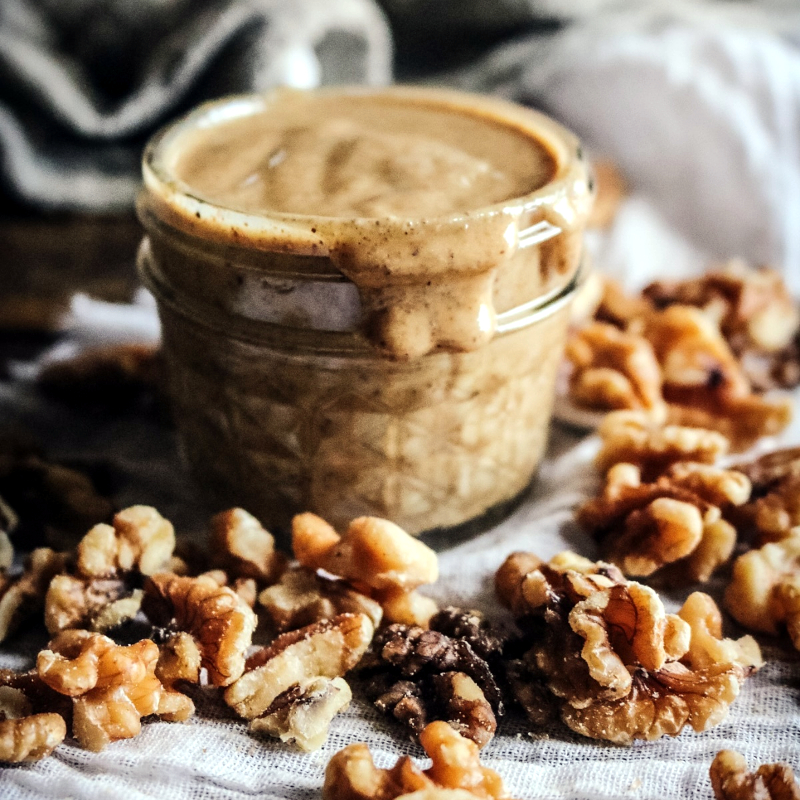
used in walnut milk or walnut-based cheese alternatives
Nut Butter – made into walnut butter, a creamy and nutritious spread.
Walnut Oil
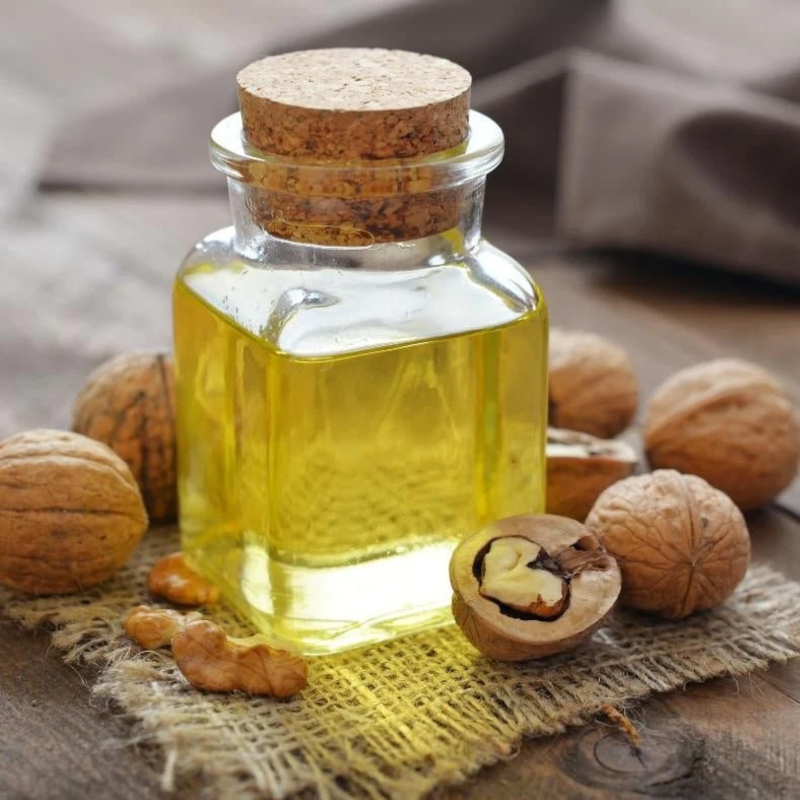
Culinary Use – a gourmet oil for salad dressings, pasta, and cold dishes
Cosmetics & Skincare – massage oils, anti-aging creams, and hair products due to its emollient and antioxidant properties
Uses Of
Tree Trunk
Premium Furniture Making
Walnut wood is prized for its rich, dark brown color and attractive grain.
Commonly used for high-end tables, chairs, beds, cabinets, and bookshelves.
It resists warping and holds shape well over time.
Flooring and Interior Design
Walnut wood is used for luxury hardwood floors, wall panels, and ceiling beams.
Offers a warm, elegant look with long-lasting durability.
Veneers – Due to its hardness and strength, it can be used in limited furniture making or for tool handles
Fine Wood Carving & Craftsmanship
Easy to carve and shape, making it ideal for sculptures, decorative inlays, and art pieces.
Used in crafting parts of string instruments like guitars, violins, and pianos.
Traditional choice for rifle and shotgun stocks due to its strength and shock resistance.
Walnut Shells
Abrasive Cleaner – ground shells used in industrial cleaning, polishing metals, or sandblasting.
Cosmetics – used as exfoliants in natural scrubs and toothpaste.
Bio-composites – used in eco-friendly plastics and construction materials.



